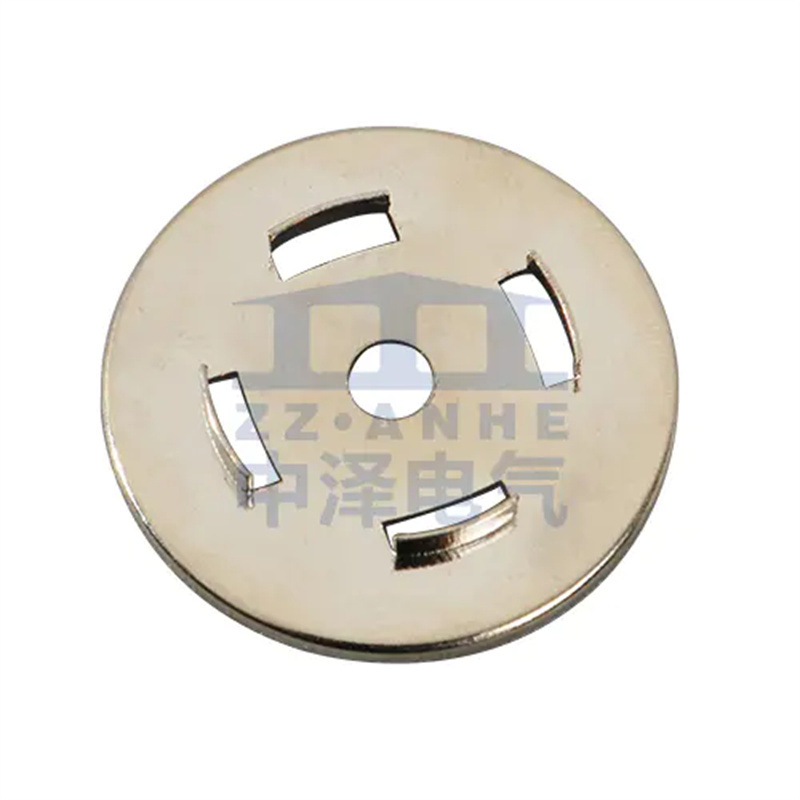Within the vast machinery of modern industry, countless components operate in precise rhythm. Among them, an unassuming circular copper ring works silently yet fulfills a critical mission: transmitting electrical energy. Known as a copper collector ring, this component is an indispensable core part of many rotating machines—such as high-voltage motors, wind turbines, and cable reels. It acts as a “rotating bridge” for electricity, safely and stably transferring power from a stationary source to rotating parts during continuous rotation. Thanks to its presence, high-voltage motors can sustain powerful output, and wind turbines can efficiently convert wind energy into electricity. Choosing copper for collector rings is no accident: its high conductivity, excellent thermal conduction, and superior machinability make it ideal for efficient, stable power transmission.
Tailored to Fit: Special Requirements for Collector Rings in Different Equipment
While both high-voltage motors and wind turbines require collector rings, their operating environments and technical demands differ drastically:
- High-voltage motor collector rings must handle high voltage and large currents, so their design prioritizes insulation and heat dissipation to prevent arcing and overheating.
- Wind turbine collector rings face harsh conditions atop wind towers—humidity, salt spray, and extreme temperature fluctuations—demanding enhanced corrosion and wear resistance.
Other equipment, such as cable reel collectors and crane trolley conductors, involves frequent starts/stops and friction, requiring precise coordination between collector rings and carbon brushes, as well as exceptional wear resistance.
These differences mean a one-size-fits-all collector ring cannot meet all needs. Tailored solutions are key to ensuring stable, efficient equipment operation. By analyzing the working characteristics of each device, engineers can design collector rings precisely suited to their needs, fundamentally resolving potential operational issues.
Manufacturing Process of Copper Collector Rings: From Raw Material to Precision Component
Crafting a high-performance copper collector ring involves a rigorous, complex technical process:
- Raw Material Selection: High-purity, low-impurity electrolytic copper is preferred. To enhance mechanical strength and wear resistance, trace elements like silver, tin, or cadmium are sometimes added via alloying.
- Initial Shaping: Copper is formed through casting or forging. Casting creates complex geometries in one step, while forging increases material density and strength through compression and shaping.
- Precision Turning: This step demands extreme accuracy to ensure the collector ring’s surface smoothness and dimensional tolerances, laying the foundation for stable operation.
- Surface Treatment: Plating with silver or gold further reduces contact resistance, enhances conductivity, and provides additional oxidation and corrosion protection.
Through these precise manufacturing steps, ordinary copper is transformed into a precision component capable of withstanding harsh industrial environments.
Installation and Maintenance: Keys to Long-Term Stable Equipment Operation
Even a well-crafted copper collector ring requires proper installation and maintenance to perform optimally:
- Installation: Ensuring concentricity between the collector ring and equipment shaft is critical—even minor eccentricity can cause vibration during operation, accelerating wear. Matching carbon brushes to the collector ring’s specifications and equipment current (considering material, size, and spring pressure) ensures stable, uniform contact, balancing conductivity and minimal friction.
- Routine Maintenance: Regular wear monitoring is essential. Inspecting carbon brush wear visually or measuring collector ring surface roughness with professional tools allows timely replacement or repair before issues escalate. Good ventilation and keeping the collector ring surface clean also extend its lifespan.
Proper installation and meticulous maintenance are vital to ensuring long-term, stable, and safe equipment operation.
Technological Innovation: Future Prospects with New Materials and Processes
As industrial equipment demands higher power, faster speeds, and tolerance for harsher environments, copper collector ring technology continues to evolve:
- New Alloys: Research focuses on alloys that retain copper’s high conductivity while offering greater hardness, wear resistance, and corrosion resistance—critical for extreme environments like offshore wind turbines.
- Additive Manufacturing: 3D printing enables complex collector ring designs unachievable with traditional methods, optimizing heat dissipation and conductivity.
- Smart Monitoring: Integrating sensors into collector rings or carbon brushes allows real-time tracking of temperature, wear, and arcing. Data analysis enables predictive maintenance, transforming upkeep from reactive to proactive and significantly reducing unplanned downtime.
These innovations promise enhanced reliability and safety for industrial equipment.
